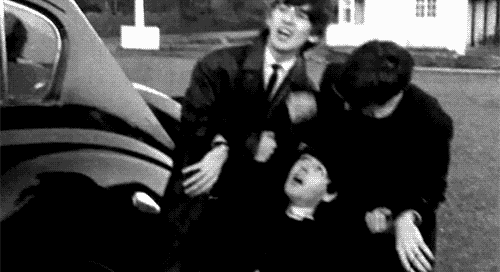Welcome back to Can’t Get Much Higher, the internet’s top destination for using numbers to understand music and the music industry. This newsletter is made possible by my readers. Consider upgrading to a paid subscription to get access to interviews, link roundups, and other fun features. If not, continue on to a murderous story.
How Many Artists Did The Beatles Kill?
By Chris Dalla Riva
When you ask people about the most consequential years in popular music, there might be no year that comes up more often than 1964. Of course, the most important thing about that year is The Beatles landing in the United States and kicking off the British Invasion. But the year is endlessly discussed because so much else went on.
The Rolling Stones released their debut album
Motown became a dominant force in pop music, releasing four number ones, three of which were by The Supremes
Bob Dylan dropped two albums
The Beach Boys continued their run of hits
Sometimes it even felt like there were more consequential releases in a single week than there were in entire decades. Take the top five songs on the Billboard Hot 100 from the week of August 15 as an example:
“Everybody Loves Somebody” by Dean Martin
“Where Did Our Love Go” by The Supremes
“A Hard Day’s Night” by The Beatles
“Rag Doll” by Frankie Valli & the Four Seasons
“Under the Boardwalk” by The Drifters
These are five songs that I return to often. And weeks like this weren’t even that rare in 1964. Just one week later, you had the same songs in the top five, except “Rag Doll” was replaced by The Animals’ “House of the Rising Son,” the song that some claim made Dylan go electric and pushed rock music into a completely new direction.
The one claim that’s always fascinated me about 1964 is that it was a line of demarcation between an old and a new way to make music. If you were making hits in 1963 and didn’t change your sound in 1964, you were going to be waiting tables by the beginning of 1965. In other words, The Beatles-led British Invasion decimated the careers of scores of artists. But was this really the case?
The sound of rock music undoubtedly changed between the beginning and middle of the 1960s. But by looking at the Billboard Hot 100, we can see if that change in sound was being made by a fleet of new groups or a bunch of older acts adapting.
To do this, I grabbed a list of all 175 acts who released at least one top 40 single in 1963. (Fun fact: the record for the most top 40 hits that year was shared by five acts: Bobby Vinton, Brenda Lee, Dion & the Belmonts, Ray Charles, and The Beach Boys. Each had six top 40 hits.) I then decided to see which of those acts never released a hit in 1964 or any year after. In total, 88 of those 175 acts, or 50%, never had a top 40 hit again.
That’s kind of a lot. In other words, The Beatles and their fellow invading Brits killed a lot of careers. Or did they? By looking at only a single year we could be biased. And we are.
Keep reading with a 7-day free trial
Subscribe to Can't Get Much Higher to keep reading this post and get 7 days of free access to the full post archives.




